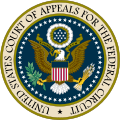Before the America Invents Act (‘AIA’), an invention owner had a one-year ‘grace period’ to file a patent application after commercially selling an invention or using the invention in public. If the patent owner failed to file a patent application within the grace period, the patent rights in the invention evaporated, leaving the owner with nothing.
The AIA changed the law and introduced ambiguity into the on-sale and public use patent bars. Under a majority reading of the AIA, the one-year grace period is still in place because the AIA included a new patent bar – the ‘otherwise available to the public’ patent bar. The majority argues that the limitation of ‘available to the public’ applies to the other patent bars, including the on-sale and public use bars. The majority argues that the AIA on-sale and public use bars now require public disclosure of the invention for the bar to apply, and the disclosure by the patent owner qualifies for the one-year grace period under other provisions of the AIA. The majority includes the U.S. Patent and Trademark Office.
The minority position, which is the position of this author, is that there is no grace period under the AIA for any commercial sale or offer for sale or public use of a claimed invention. This author believes that any commercial sale or offer for sale or public use of the claimed invention instantly terminates all patent rights in the invention, unless a patent application has been filed as of the time of the commercial sale or offer for sale or public use.
The Federal Circuit Court of appeals rejected the majority’s argument in Helsinn Healthcare v Teva on May 1, 2017. The Helsinn decision concludes that ‘available to the public’ is not a limitation on the on-sale and public use bars and that a sale or use does not have to disclose the invention to trigger the bars. The decision does not directly determine the issue of whether the grace period still is in effect for sales or public use under the AIA – that issue was not raised or decided; however, the Helsinn decision knocks the legal underpinnings from under the majority position.
We’ve said it before, but it bears repeating – make sure that you file your patent application before you use an invention in public or sell or offer an invention for sale.


